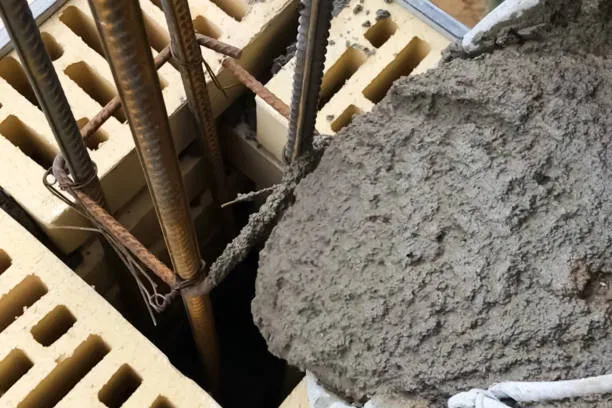Blog

Abstract: Concrete is one of the most widely used construction materials in the world. However, its properties and performance can be further enhanced by the addition of chemical admixtures. These additives play a crucial role in modifying the characteristics of concrete to meet the specific requirements of different construction projects.
In this article, we will explore the various types of chemical admixtures used in concrete and their effects on its properties.
Function: Superplasticizer improves the workability of concrete by reducing the water cement ratio. It has a strong dispersing effect on cement, which can greatly improve the fluidity of cement mixtures and the slump of concrete, while significantly reducing water consumption and improving the workability of concrete.
Mechanism: They work by adsorbing onto the surface of cement particles and dispersing them, thereby reducing the interparticle forces and allowing the concrete to flow more easily.
Examples: Polycarboxylate superplasticizers are commonly used due to their high efficiency and compatibility with different types of cement.
Function:The purpose of adding retarders to commercial concrete is to extend the hydration and hardening time of cement, so that fresh concrete can maintain plasticity for a longer period of time, thereby adjusting the setting time of fresh concrete.
Mechanism: They interact with the cement hydration process and delay the formation of hydration products, extending the setting time.
Examples: Citric acid and sugar are common retarders used in concrete.
Function: Accelerators are used to speed up the setting and hardening of concrete. They are very useful in cold weather or when there is a need to catch up with the schedule.
Mechanism: They promote the early formation of hydration products and increase the rate of cement hydration.
Examples: Calcium chloride is a widely used accelerator, but its use needs to be carefully controlled as excessive use can cause corrosion of reinforcement.
Function: Air-entraining agents introduce small air bubbles into the concrete.Improve the fluidity, cohesiveness, and water retention of concrete mixtures, and enhance the fluidity of concrete.
Mechanism: They lower the surface tension of the water in the concrete mix, allowing air to be incorporated in the form of small, evenly distributed bubbles.
Examples: Vinsol resin and synthetic detergents are used as air-entraining agents.
Function: Waterproofing agents are added to make concrete impermeable to water. They prevent water leakage and improve the durability of concrete structures exposed to water.
Mechanism: They form a hydrophobic layer on the surface of concrete or react with the cement hydration products to fill the pores and reduce the permeability of concrete.
Examples: Silicone-based waterproofing agents and asphalt emulsions are commonly used.
Superplasticizers and air-entraining agents significantly improve the workability of concrete, making it easier to mix, place, and finish. Retarders can also help maintain workability for a longer period.
Superplasticizers can increase concrete’s compressive and tensile strength by reducing the water-cement ratio. Accelerators can promote early strength development, while the proper use of air-entraining agents can also positively impact strength in some cases.
Waterproofing agents enhance concrete durability by preventing water ingress and reducing the risk of corrosion and deterioration. Air-entraining agents improve concrete’s resistance to freezing and thawing cycles.
Retarders and accelerators, when used appropriately, can also contribute to better durability by ensuring proper setting and hardening.
Retarders increase the setting time, while accelerators decrease it. This allows for better control over the construction process and ensures that the concrete has the right consistency at placement.
The correct dosage of chemical admixtures is crucial. Too much or too little can produce undesirable effects on the concrete properties.
Manufacturers’ recommendations and laboratory tests should be followed to determine the optimal dosage.
Chemical admixtures should be compatible with the cement, aggregates, and other additives used in the concrete mix. Compatibility issues can cause problems such as reduced workability, strength loss, or improper setting.
Some chemical admixtures may have environmental implications. For example, certain accelerators may release harmful substances during the hydration process.
Consideration should be given to using environmentally friendly admixtures or minimizing the use of those with a significant environmental impact.
Regular quality control tests should be conducted to ensure that the chemical admixtures are of the required quality and that their addition to the concrete results in the desired properties.
This includes testing the workability, strength, and durability of the concrete.
Chemical admixtures in concrete are essential for improving its performance and durability. They offer many benefits, from enhancing workability to increasing strength and improving resistance to various environmental factors.
However, their use requires careful consideration of dosage, compatibility, environmental impact, and quality control. By understanding and properly using chemical admixtures, the construction industry can produce higher-quality concrete structures that are more durable and meet the specific requirements of different projects.

How Polycarboxylate Polyether Monomer Affect Concrete Performance
Blog How Polycarboxylate

How Polycarboxylate Superplasticizer Interacts With Slag In Concrete
Blog How Polycarboxylate